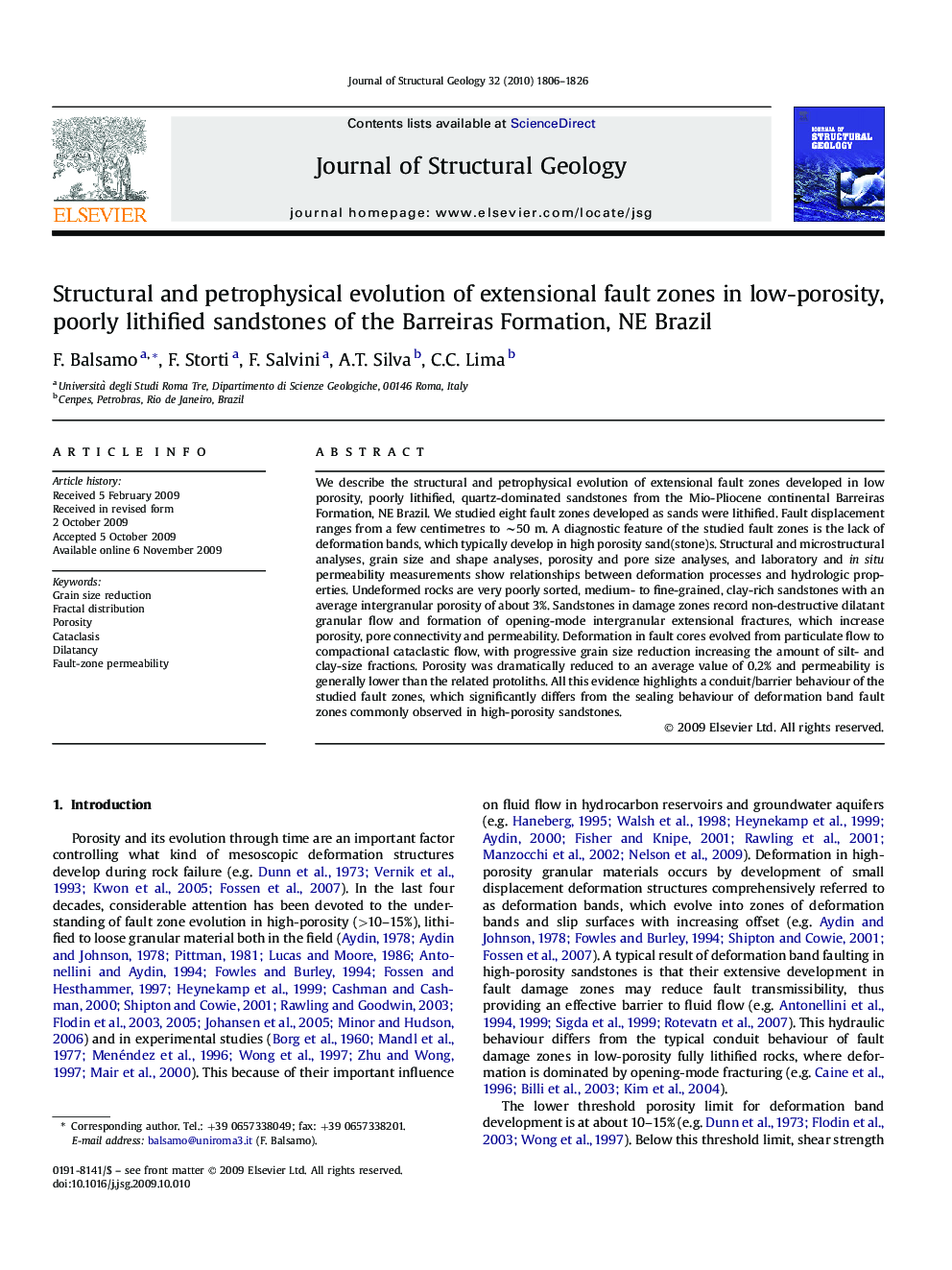| Article ID | Journal | Published Year | Pages | File Type |
|---|---|---|---|---|
| 4733803 | Journal of Structural Geology | 2010 | 21 Pages |
We describe the structural and petrophysical evolution of extensional fault zones developed in low porosity, poorly lithified, quartz-dominated sandstones from the Mio-Pliocene continental Barreiras Formation, NE Brazil. We studied eight fault zones developed as sands were lithified. Fault displacement ranges from a few centimetres to ∼50 m. A diagnostic feature of the studied fault zones is the lack of deformation bands, which typically develop in high porosity sand(stone)s. Structural and microstructural analyses, grain size and shape analyses, porosity and pore size analyses, and laboratory and in situ permeability measurements show relationships between deformation processes and hydrologic properties. Undeformed rocks are very poorly sorted, medium- to fine-grained, clay-rich sandstones with an average intergranular porosity of about 3%. Sandstones in damage zones record non-destructive dilatant granular flow and formation of opening-mode intergranular extensional fractures, which increase porosity, pore connectivity and permeability. Deformation in fault cores evolved from particulate flow to compactional cataclastic flow, with progressive grain size reduction increasing the amount of silt- and clay-size fractions. Porosity was dramatically reduced to an average value of 0.2% and permeability is generally lower than the related protoliths. All this evidence highlights a conduit/barrier behaviour of the studied fault zones, which significantly differs from the sealing behaviour of deformation band fault zones commonly observed in high-porosity sandstones.
